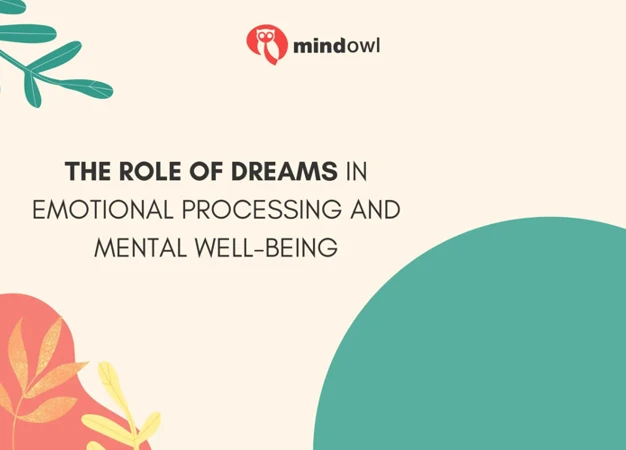Have you ever woken up from a dream feeling a rollercoaster of emotions, from fear and anxiety to joy and love? Dreams have long fascinated and perplexed us, as they provide a glimpse into our subconscious mind and offer a unique insight into our emotional landscape. In this article, we dive into the mysterious world of dreams and explore the role they play in emotional processing and healing. From understanding the nature of dreams to the therapeutic approaches used in dream analysis, we will unravel the profound impact dreams can have on our emotional wellbeing and provide practical strategies for nurturing and utilizing the power of dreams in our daily lives. So, grab your dream journal and get ready to embark on a journey of self-discovery and transformation.
Understanding Dreams

Dreams have captivated and puzzled humanity for centuries. They provide us with a glimpse into the depths of our subconscious mind, revealing a world of symbolism, meaning, and emotion. While the exact purpose and function of dreams remain a mystery, they are believed to serve a crucial role in our emotional processing and healing. Understanding dreams involves unraveling their nature and exploring the different types they can take. From vivid and lucid dreams to recurring and prophetic dreams, each holds its own significance and impact on our psyche. Dreams offer a gateway into our hidden desires, fears, and unresolved emotions, allowing us to tap into a realm of self-awareness and discovery. They hold the potential to inspire creativity, enhance memory, and even offer guidance in our waking lives. For those who wish to harness the power of dreams, techniques such as dream incubation, dream journaling, and exploring hidden messages can prove invaluable in unlocking the transformative potential of these nightly adventures. So, delve into the world of dreams and uncover the secrets they hold as we embark on a journey of interpretation and self-reflection.
Definition and Nature
Dreams, in their essence, are a series of experiences, sensations, and thoughts that occur during our sleep. They are manifestations of our subconscious mind, giving us a window into the complex and layered realms of our inner world. The nature of dreams is multifaceted and can vary greatly from person to person. While some dreams may be vivid and memorable, others may be fleeting and easily forgotten upon waking. Dreams can transport us into fantastical landscapes, immerse us in emotional dramas, or provide us with insights and glimpses of our deepest desires and fears. They can be filled with vibrant colors, bizarre scenarios, and a cast of characters drawn from our memories and imagination. Dreams can also take different narrative forms, ranging from sequential stories to fragmented and disjointed snippets. They may tap into our personal experiences, cultural influences, or even archetypal symbols that are universally recognized. The intricate interplay of images, emotions, and narratives in dreams creates a rich tapestry that reflects the depths of our subconscious mind. Understanding the definition and nature of dreams is the first step in unlocking the profound impact they can have on our emotional processing, self-awareness, and spiritual journey. By exploring the symbolism and meaning embedded within our dreams, we can gain valuable insights into our own psyche, paving the way for personal growth and self-discovery. So, let us delve deeper into the enigmatic realm of dreams and uncover their hidden treasures. [Anchor: dream incubation]
Types of Dreams
Types of dreams encompass a vast array of experiences that occur during sleep, each with its own distinct characteristics and implications. One common type is the **lucid dream**, in which the dreamer becomes aware that they are dreaming and can consciously participate in and manipulate the dream’s events. Lucid dreaming opens up a realm of possibilities for self-exploration and creativity. Another fascinating type is the **prophetic dream**, which is believed to provide glimpses of the future or offer insights into upcoming events. Prophetic dreams have been reported throughout history, and while their true nature remains a subject of debate, they continue to intrigue and captivate us.
Some dreams are characterized by vividness and intensity, enveloping the dreamer in a sensory-rich experience. These **epic dreams** often feature complex narratives, vivid imagery, and a heightened emotional impact. On the other end of the spectrum, we have **nightmare dreams**, which are characterized by feelings of fear, anxiety, and distress. Nightmares can stem from various sources, such as unresolved trauma, stress, or even certain medications.
Recurring dreams are another intriguing type of dream that can repeat themselves over a period of time or throughout a person’s life. These dreams may reflect unresolved issues or repetitive patterns in one’s life that need attention and resolution. Exploring the symbols and themes within recurring dreams can offer valuable insights into our subconscious desires and fears.
Lastly, we have **profound dreams**, which are characterized by their deep emotional impact and profound sense of meaning. These dreams often leave a lasting impression on the dreamer, provoking intense emotions and triggering introspection. They can provide profound insights into our own psyche and guide us towards personal growth and transformation.
Understanding the different types of dreams allows us to appreciate the diverse nature of our dream experiences and delve deeper into the messages our subconscious is trying to convey. Whether you’re curious about harnessing the power of dreams for inspiration, exploring the ways dreams can boost memory, or uncovering hidden messages within your own dreams, this understanding serves as a foundation for our exploration of dreams and their role in emotional processing and healing.
The Emotional Landscape of Dreams

Dreams serve as a rich tapestry of emotions, weaving together intricate landscapes of feelings that can range from intense fear and anxiety to overwhelming joy and love. While the emotional landscape of dreams is unique to each individual, certain themes and patterns often emerge. Dreams provide a safe space for our subconscious mind to process and explore a wide range of emotions that may be challenging to confront in waking life. Within the depths of our dreams, we may encounter unresolved emotional conflicts, repressed memories, and desires that have been suppressed. These dreams can act as a release valve, allowing us to experience and work through these emotions in a symbolic and metaphorical way. With the help of dream analysis and interpretation, we can gain insight into the deeper emotional currents that shape our lives and use this newfound understanding to foster healing and personal growth. As we unravel the mysteries of our dreams, we tap into a wellspring of emotional wisdom that can guide us on our journey towards self-discovery and transformation. So, embrace the vast emotional landscape of your dreams and embark on a voyage of emotional exploration and healing.
Emotions Explored in Dreams
The realm of dreams is a rich tapestry of emotions, where our deepest feelings and experiences come to life. Emotions explored in dreams can range from intense fear and anxiety to overwhelming joy and love. Dreams have the power to amplify and magnify our emotions, allowing us to process and navigate complex emotional landscapes. In our dreams, we may find ourselves confronted with unresolved emotions from past experiences, reenacting traumatic events or reliving moments of great happiness and contentment. These emotions can manifest themselves in various ways, from the visceral and raw to the symbolic and abstract. It is not uncommon to experience a rollercoaster of emotions within a single dream, as our subconscious mind weaves together a complex tapestry of feelings. For example, a dream may start with feelings of fear and apprehension, then transition to a sense of relief and joy, only to end with a lingering sense of sadness or longing. Through dreams, we have the opportunity to explore and process emotions that may be difficult to confront in our waking lives, providing a safe space for self-reflection and emotional healing. So, the next time you wake up from a dream with a jumble of emotions, take a moment to reflect on the richness of your emotional experiences within the dream world.
Dream Symbols and their Emotional Significance
Dream symbols play a significant role in unlocking the emotional significance hidden within our dreams. As we explore our dream world, we encounter a rich tapestry of images, objects, and events that carry deeper meaning and reflect our subconscious thoughts and emotions. These symbols can be highly personal, influenced by our individual experiences, beliefs, and cultural background. For example, a dream about flying may symbolize a sense of freedom and liberation for one person, while for another, it may represent a desire for control or the need to escape.
Understanding dream symbols requires a willingness to dive into the realm of symbolism and consider the emotional impact they hold. While some symbols may have universal meanings, such as water representing emotions or snakes symbolizing transformation, others are subjective and require personal interpretation. It is important to reflect on the feelings invoked by the symbol and how it relates to your current emotional state or life circumstances.
Dream symbols can also evolve and change over time, influenced by shifts in our own experiences and perspectives. Keeping a dream journal can be instrumental in deciphering the emotional significance of dream symbols, as it allows us to track recurring symbols and patterns, noticing any connections between our dreams and our waking lives. Dream analysis techniques, such as active imagination or working with a dream therapist, can also provide valuable insight into the emotional depth of dream symbols.
By delving into the world of dream symbols and exploring their emotional significance, we gain a deeper understanding of our own psyche and emotional landscape. Dream symbols can act as powerful guides, offering wisdom and insight into our unconscious desires, fears, and unresolved emotions. They provide a unique opportunity for self-reflection and personal growth, ultimately leading to a greater sense of emotional well-being and self-awareness. So, embrace the rich symbolism of your dreams and uncover the hidden messages they hold within.
To learn more about uncovering hidden messages in dreams, check out our article: Uncovering Hidden Messages in Dreams.
Role of Dreams in Emotional Processing
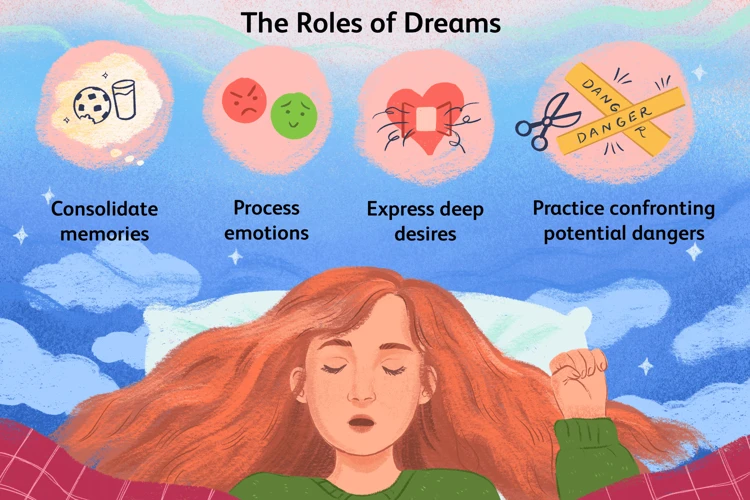
Dreams serve a significant role in our emotional processing, providing a platform for the exploration and resolution of our deepest feelings. While we are awake, our conscious mind often suppresses or overlooks certain emotions, but during sleep, dreams act as a bridge to our unconscious, allowing suppressed emotions to surface. This unconscious processing enables us to revisit past experiences and traumas, providing an opportunity for healing and growth. Dreams can be an emotional release valve, allowing us to vent and release pent-up feelings, leading to a sense of catharsis. By expressing and unraveling complex emotions through dream symbolism and narrative, we gain insight into our innermost thoughts and fears. These insights can offer clarity, perspective, and a sense of resolution, aiding in our emotional well-being and overall healing journey. So, embrace the enigmatic realm of dreams and harness their power in emotional processing and healing.
Unconscious Processing
Unconscious processing is a key aspect of the role dreams play in emotional processing. When we sleep, our conscious mind takes a break, allowing the unconscious mind to take over and process emotions, memories, and experiences. During this time, the unconscious mind weaves together different elements, creating a complex tapestry of symbols and narratives that reflect our emotional state and inner conflicts. Dreams act as a medium through which the unconscious mind communicates with us, presenting us with images and scenarios that hold deeper meanings. This unconscious processing allows us to delve into unresolved emotions and traumas, often bringing them to the surface for healing and integration. It is in this realm of the unconscious that dreams provide a safe space for exploration and transformation. By analyzing the symbols, themes, and emotions presented in our dreams, we can gain valuable insights into our psychological well-being and work towards resolving emotional issues. So, the next time you awake from a vivid dream, take a moment to reflect on the unconscious processing at play and explore the messages your dreams may hold.
Revisiting Past Emotions and Trauma
Dreams have a remarkable ability to take us back in time, allowing us to revisit past emotions and trauma that may have been suppressed or forgotten in our waking lives. When we sleep, our mind enters a state of relaxation, and the barriers that typically protect us from painful memories are lowered. This creates an opportunity for unresolved emotions and traumatic experiences to resurface and be processed. In dreams, we may find ourselves reliving specific events, confronting the emotions associated with them, and gaining a new perspective on the past. This process can be both challenging and healing, as it offers us a chance to confront and release buried feelings. While revisiting past emotions and trauma in dreams can be intense, it can also be an essential step towards emotional healing and growth. Dreams provide a safe space for us to explore and process these experiences, allowing us to gradually come to terms with them and move forward in our waking lives. By addressing and integrating these past emotions, we can find a newfound sense of healing and empowerment. If you’re interested in learning more about harnessing the power of dreams for emotional growth and inspiration, you can read our article on dream incubation. Additionally, it’s fascinating to note that dreams can also play a role in boosting memory recall, as explored in our article on surprising ways dreams boost memory.
Emotional Release and Catharsis
Emotional release and catharsis are essential components of the role dreams play in emotional processing and healing. When we dream, our unconscious mind has the opportunity to process and release pent-up emotions that we may not consciously acknowledge or address in our waking lives. Dreams serve as a safe space for us to explore and express our deepest fears, desires, and unresolved emotions. They act as a natural release valve, allowing us to let go of emotional baggage and experience a sense of catharsis.
During dreams, we may encounter vivid scenarios that evoke strong emotions such as fear, anger, or sadness. These dream experiences provide a unique opportunity to confront and process these emotions in a symbolic and metaphorical way. As we engage with the emotional content of our dreams, we can begin to gain insights and understandings about our inner emotional landscape. The act of experiencing and expressing these emotions in the dream realm can facilitate a sense of release and healing.
Dreams not only provide a space for emotional release but also offer the potential for catharsis. Catharsis refers to the purging or release of emotional tension and can have a transformative effect on our emotional well-being. When we allow ourselves to fully experience and express emotions in our dreams, we create an opportunity to release and heal from past traumas or unresolved emotional wounds. It is through this process of catharsis that we can begin to integrate and heal the emotional aspects of our psyche.
It is important to note that while dreams can facilitate emotional release and catharsis, they are not a substitute for professional therapy or support. If you find that your dreams consistently evoke intense or distressing emotions, it may be beneficial to seek the guidance of a trained therapist who can help you navigate and process these experiences. Through their expertise, they can assist you in understanding and working through the emotional implications of your dreams, ultimately supporting your overall healing journey. So, embrace the emotional release and catharsis that dreams offer, but remember to prioritize your mental and emotional well-being by seeking professional help when necessary.
Healing Through Dream Work
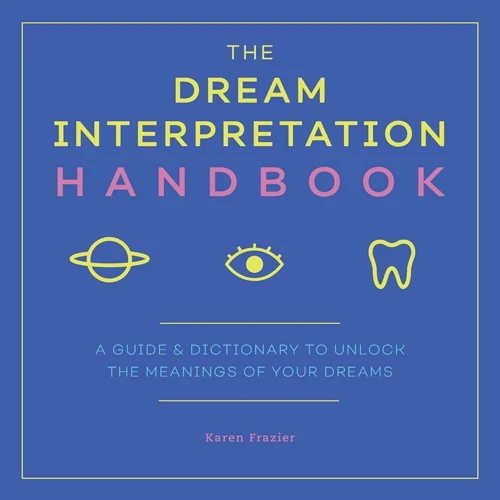
Dreams have the extraordinary ability to facilitate healing and emotional growth. Through dream work, we can tap into the rich symbolic language of our subconscious mind and process unresolved emotions and traumas. One of the key aspects of dream work is the exploration of unconscious processes that occur during sleep, allowing us to access parts of our psyche that may be inaccessible during waking hours. By revisiting past emotions and traumas within the safe confines of a dream, we can begin to make sense of them, gain new perspectives, and ultimately find resolution and healing. Dreams also offer a unique opportunity for emotional release and catharsis, as they provide a space for us to express and explore intense feelings that may be too overwhelming or repressed in our waking lives. Through various therapeutic approaches to dream analysis, such as Jungian psychology or Gestalt therapy, we can integrate the wisdom of our dreams into our conscious selves, leading to profound transformation and emotional well-being. So, embark on the journey of dream work and unlock the healing power that lies within the realm of dreams.
Therapeutic Approaches to Dream Analysis
Therapeutic approaches to dream analysis encompass a range of techniques and methodologies that can help individuals gain deeper insights into the meaning and significance of their dreams. Here are a few commonly used approaches:
1. Psychoanalytic Approach: Popularized by Sigmund Freud, this approach focuses on the interpretation of dreams as a pathway to understanding the unconscious mind. It emphasizes the role of symbolism and seeks to uncover hidden desires, conflicts, and unresolved emotions through the analysis of dream content.
2. Cognitive Approach: This approach explores the cognitive processes that underlie dream formation and interpretation. It focuses on understanding the thoughts, beliefs, and schemas that shape our dream experiences. Cognitive therapists often help individuals identify and challenge negative thought patterns or maladaptive cognitions depicted in dreams, leading to greater self-awareness and personal growth.
3. Gestalt Therapy: In Gestalt therapy, dreams are viewed as a reflection of the individual’s present state and experiences. The therapist may encourage clients to reenact and dialogue with dream elements, gaining new insights and a deeper understanding of their feelings and motivations.
4. Transpersonal Approach: This approach recognizes the spiritual and transcendent aspects of dreams. It explores dreams as a connection to a higher self or collective unconscious. Therapists utilizing a transpersonal approach may guide individuals in uncovering spiritual or transformative experiences within their dreams.
5. Imagery and Symbolism Analysis: This approach involves focusing on the vivid imagery and symbolism present in dreams. Therapists help individuals explore the emotional significance of dream symbols and their potential relevance to waking life circumstances. Techniques such as guided imagery or art therapy may be used to further explore and interpret dream symbols.
Remember, these therapeutic approaches to dream analysis are not mutually exclusive, and therapists may employ a combination of methods depending on the individual’s needs and goals. The goal of dream analysis in therapy is to provide a safe and supportive environment for individuals to explore their dreams, gain self-awareness, and facilitate personal growth and healing.
Integration and Transformation
Integration and transformation are key processes that take place when we engage with our dreams on a deeper level. Dream work involves not only analyzing and understanding the symbols and emotions within our dreams but also actively integrating the insights gained into our waking lives. This integration allows us to bring about positive and lasting change.
One way to facilitate integration is by reflecting on the messages and imagery from our dreams and discerning how they relate to our current emotional state, relationships, and life circumstances. By recognizing patterns and recurring themes in our dreams, we can gain valuable insights into our subconscious desires, fears, and unresolved issues. This newfound self-awareness then provides us with an opportunity to consciously make choices and take actions that align with our personal growth and well-being.
Transformation occurs when we actively apply the lessons and insights from our dreams to our daily lives. This can involve making changes in our behavior, beliefs, or attitudes based on the messages received in our dreams. For example, if a dream reveals feelings of unresolved anger, we can use this awareness as a catalyst for seeking forgiveness or finding healthy ways to express and release our anger.
Dreams also have the potential to facilitate healing by bringing buried emotions and memories to the surface. Through dream work and guided exploration, we can revisit past traumas and unresolved emotions, allowing for catharsis and emotional release. This process aids in the integration of these emotions, leading to a greater sense of wholeness and healing.
In essence, integration and transformation through dream work enable us to bridge the gap between our conscious and subconscious selves. By actively engaging with our dreams and using their insights for personal growth, we can tap into the incredible power of our subconscious mind and create meaningful and lasting change in our lives.
Dreams as a Tool for Self-Reflection and Insight

Dreams serve as a powerful tool for self-reflection and insight, allowing us to delve into the deepest corners of our subconscious mind. Through dream analysis and interpretation, we can gain a better understanding of ourselves, our emotions, and our life experiences. One way to utilize dreams for self-reflection is by keeping a dream journal. By recording and analyzing our dreams, we can identify patterns, recurring themes, and symbols that hold personal significance. This process helps us uncover hidden aspects of ourselves and provides valuable insights into our thoughts, feelings, and desires. Another technique for utilizing dreams as a tool for self-reflection is practicing lucid dreaming. When we become aware that we are dreaming while still in the dream state, we can actively engage with the dream and explore its meaning. This heightened level of awareness allows us to ask questions, seek guidance, and gain profound insights into our waking life. Dreams can offer a safe and non-judgmental space to examine unresolved emotions, traumas, and conflicts. By revisiting these experiences in the dream realm, we can process and heal emotional wounds that may otherwise be difficult to address consciously. This process of emotional healing through dreams often involves cathartic release, allowing us to let go of negative emotions and find closure. Ultimately, dreams provide a unique opportunity for self-reflection, offering a gateway to deeper self-awareness, personal growth, and transformation. So, embrace the power of your dreams and unlock the wisdom they hold within.
The Scientific Perspective
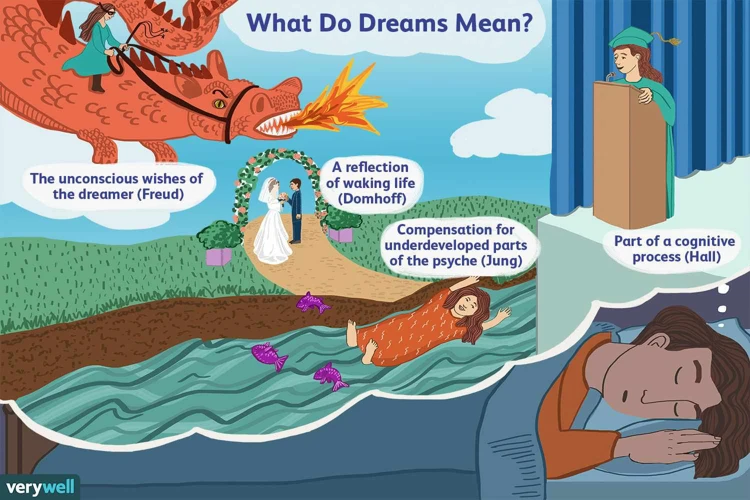
The scientific perspective on dreams offers fascinating insights into the neurological and psychological aspects of this enigmatic phenomenon. Neurologically, research has shown that dreams are closely linked to brain activity during sleep, particularly in the rapid eye movement (REM) phase. During REM sleep, the brain actively processes emotions and memories, forming connections and consolidating information. This suggests that dreams serve as a way for the brain to integrate and make sense of our experiences. Psychologically, various theories have emerged to explain the functions of dreams. The activation-synthesis theory suggests that dreams are a result of the brain’s attempt to make sense of random neural activity, creating coherent narratives. The psychoanalytic theory, proposed by Sigmund Freud, suggests that dreams are a window into the unconscious mind, allowing us to explore repressed desires and conflicts. These scientific perspectives provide a deeper understanding of the underlying mechanisms and purposes of dreams, shedding light on their role in emotional processing and personal growth.
Neurological and Psychological Explanations
Neurological and Psychological Explanations:
– Neurological Perspective: From a neurological standpoint, dreams are believed to originate from the activation of certain brain regions during sleep, particularly the limbic system and the prefrontal cortex. The limbic system, which is associated with emotions and memory, plays a crucial role in shaping the emotional landscape of dreams. Meanwhile, the prefrontal cortex, responsible for executive functions and decision-making, may help in constructing narratives and scenarios within dreams. This interplay between these brain regions leads to the creation of dreams that are rich in emotional content and symbolism.
– Psychological Perspective: In the field of psychology, dreams have been studied through various theories and approaches. Sigmund Freud, one of the most influential figures in dream analysis, believed that dreams serve as a window into the unconscious mind, allowing suppressed desires and emotions to manifest in symbolic forms. According to Freud’s psychoanalytic theory, dreams contain both manifest content (the surface-level storyline) and latent content (the hidden, symbolic meaning). Carl Jung, another prominent psychologist, proposed the concept of archetypes in dreams, suggesting that certain symbols and themes appear across cultures and reflect universal human experiences. Other psychological perspectives, such as cognitive and evolutionary psychology, focus on the function of dreams in memory consolidation, problem-solving, and emotional processing.
Understanding dreams from both neurological and psychological perspectives provides a comprehensive framework for appreciating their complexity and significance. While neuroscience helps us understand the biological basis of dreams, psychology delves into their deeper meanings and functions in our inner world. Together, these perspectives contribute to a holistic understanding of the role of dreams in emotional processing and healing.
Theories Explaining Dream Function
Theories Explaining Dream Function:
1. The Psychoanalytic Theory (Freud and Jung): Sigmund Freud, a renowned psychoanalyst, suggested that dreams are a manifestation of unconscious desires and wishes. According to his theory, dreams serve as a gateway to the unconscious mind, allowing repressed thoughts and emotions to surface. Freud believed that analyzing dream symbols and their underlying meanings could provide insights into unresolved conflicts and contribute to psychological healing. Carl Jung, a disciple of Freud, expanded on this theory by suggesting that dreams also contain symbolic representations of archetypes, universal experiences and images shared by all human beings.
2. The Activation-Synthesis Theory: Proposed by Allan Hobson and Robert McCarley, this theory suggests that dreams are a result of random neural activity in the brain. According to this perspective, dreams are not meaningful but rather a byproduct of the brain’s attempt to make sense of sensory information during sleep. Dreams are seen as the brain’s attempt to synthesize these random neural signals into a coherent narrative.
3. The Cognitive Theory: This theory posits that dreams serve a cognitive purpose and play a role in memory consolidation and learning. It suggests that during sleep, the brain processes and organizes information gathered throughout the day, reinforcing important memories and discarding irrelevant ones. Dreams, in this view, are a reflection of this cognitive process.
4. The Threat Simulation Theory: This theory proposes that dreams serve an evolutionary function by simulating potential threats and preparing individuals to deal with them in waking life. According to this perspective, dreams allow us to practice and rehearse how to respond to dangerous situations, enhancing our survival instincts and adaptive behavior.
5. The Emotional Regulation Theory: This theory suggests that dreams help regulate and process emotions. Dreams provide a safe space for individuals to explore and experience intense emotions that may be difficult to handle in waking life. They serve as a way to release and process emotional tensions, allowing individuals to achieve emotional balance and well-being.
Each of these theories offers unique insights into the purpose and function of dreams. While there is no definitive answer to why we dream, exploring these theories can deepen our understanding of the complex and enigmatic nature of dreams.
Nurturing Dreams for Emotional Wellbeing

Nurturing our dreams can greatly contribute to our emotional wellbeing. One powerful way to cultivate a deeper connection with our dreams is by maintaining a dream journal. By recording our dreams upon waking, we create a space for reflection and introspection, allowing us to uncover recurring themes, symbols, and emotions that may be at play. Additionally, practicing lucid dreaming can be a powerful tool for exploring and influencing our dreams. By becoming aware within the dream state, we can actively engage with the dream narrative and even steer the direction of our dreams towards resolution and healing. Incorporating relaxation techniques such as meditation and deep breathing before sleep can promote a peaceful and receptive state, enhancing the clarity and vividness of our dreams. By nurturing our dreams in these ways, we open ourselves up to the immense potential for self-discovery, growth, and emotional healing that dreams can provide.
Maintaining a Dream Journal
Maintaining a Dream Journal is a powerful practice for unlocking the depths of your dreams and gaining insights into your emotional processing and healing. By keeping a journal dedicated to recording your dreams, you create a space for reflection and exploration. When you wake up, immediately jot down any details you can recall from your dreams, including vivid images, emotions, and even the people or settings involved. The act of writing down your dreams not only helps solidify them in your memory but also allows you to analyze and interpret them more effectively. Take the time to review your dream entries regularly, noting any recurring themes, symbols, or patterns that may emerge. This process can lead to a deeper understanding of your subconscious and the emotional landscape within your dreams. Don’t worry about your writing being perfect or making complete sense; what matters is capturing the essence and essence of your dream experience. Consider including sketches, doodles, or colors in your journal to further capture the visual elements of your dreams. By maintaining a dream journal, you cultivate a valuable resource for self-reflection and personal growth, as well as a tangible record of your dreaming journey.
Practicing Lucid Dreaming
Practicing lucid dreaming is an exciting technique that allows individuals to become aware that they are dreaming while still in the dream state. Essentially, it provides the opportunity for dreamers to actively participate and manipulate their dreams. The state of lucid dreaming offers a unique platform for emotional exploration and healing. When you achieve lucidity in a dream, you have the ability to engage with the dream content consciously. This can involve anything from changing the location or surroundings of the dream to interacting with dream characters or even confronting and resolving emotional challenges within the dream. By practicing lucid dreaming, individuals can gain a sense of empowerment and control over their dreams, which can have a transformative effect on their emotional well-being. techniques can be incorporated into lucid dreaming practice, such as reality checks throughout the day, maintaining a dream journal, and setting intentions before sleep. These methods can increase the likelihood of becoming lucid within dreams and help individuals harness the full potential of their dream experiences. Exploring the depths of the mind through lucid dreaming can provide profound insights, facilitate emotional processing and healing, and open doors to personal growth and self-discovery. So, dive into the realm of lucid dreaming and unlock the limitless possibilities that lie within your dreams.
Interpreting Dreams with Cultural Context

Interpreting dreams with cultural context adds an additional layer of depth and understanding to the analysis process. Dreams are not only influenced by our personal experiences and emotions but also by the cultural beliefs, symbols, and myths that surround us. Cultural context plays a significant role in shaping the meanings and interpretations attributed to various dream symbols and themes. Different cultures may have unique symbolism attached to common dream elements, such as animals, colors, or natural phenomena.
In some cultures, snakes may represent transformation and healing, while in others, they may symbolize danger or deceit. Similarly, the color white may signify purity and innocence in one culture, whereas it may represent mourning or death in another. By considering cultural influences, dream analysts can gain a broader understanding of the dreamscape and its underlying messages.
To interpret dreams with cultural context, it is essential to research and explore the specific cultural symbols, myths, and traditions that are relevant to the individual or the society being studied. This can be done by studying cultural folklore, literature, religious texts, or consulting cultural experts and anthropologists. By understanding the cultural nuances, dream interpreters can provide more accurate and meaningful interpretations that resonate with the dreamer’s cultural background.
It’s important to note that while cultural context adds valuable insights to dream interpretation, it is not the sole determining factor. Each dream is highly personal and influenced by the individual’s unique experiences and beliefs. A holistic approach that considers both personal and cultural context is necessary for a comprehensive understanding of dreams.
Interpreting dreams with cultural context allows for a richer exploration of symbolism and meaning, taking into account the cultural tapestry that colors our dreams. By embracing cultural perspectives, dream analysts can unlock hidden layers of insight and offer interpretations that are more culturally sensitive and relevant to the dreamer’s lived experiences. Remember, dreams are a universal language that bridges the gap between the conscious and unconscious mind, and exploring them through the lens of cultural context enhances our understanding of ourselves and the world around us.
Common Dream Symbols and Their Emotional Meanings
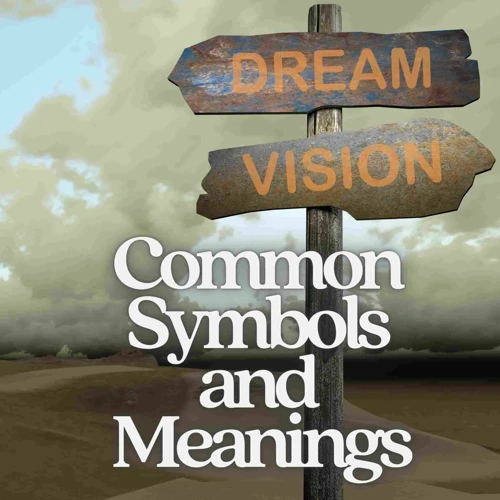
Common Dream Symbols and Their Emotional Meanings
Dream symbols can hold significant emotional meanings, providing insights into our subconscious thoughts and feelings. Understanding the emotional significance behind these symbols can offer valuable clues for interpreting our dreams. Here are some common dream symbols and their associated emotional meanings:
1. **Water**: Water in dreams often represents emotions and the subconscious mind. Depending on the context, calm and clear water can symbolize tranquility and emotional stability. On the other hand, turbulent or murky water may signify emotional turmoil and unresolved feelings.
2. **Flying**: Dreaming of flying often evokes feelings of freedom, empowerment, and control. It can represent a sense of liberation from limitations or the desire to overcome challenges. However, if the dreamer experiences fear or anxiety while flying, it may indicate a lack of confidence or fear of taking risks.
3. **Falling**: Falling in a dream can evoke a wide range of emotions, from fear and helplessness to surrender and acceptance. It can symbolize a loss of control, insecurities, or a fear of failure. Alternatively, falling can also represent a desire for change or a need to let go of something that no longer serves us.
4. **Being Chased**: Being chased in a dream often reflects feelings of anxiety, fear, or vulnerability. It may symbolize unresolved conflicts, stress, or the avoidance of confronting challenging situations in waking life. Exploring the source of the fear and addressing it can help alleviate these negative emotions.
5. **Death**: Dreaming of death can be unsettling, but it doesn’t necessarily predict literal death. Instead, it often symbolizes major transformations or endings in our lives. It can represent the need to let go of the past, embrace change, or signify a rebirth or new beginning.
6. **Teeth**: Teeth are commonly associated with our sense of self-esteem and confidence. Dreaming of losing teeth can signify a fear of aging, feeling powerless, or experiencing a loss of control. In contrast, dreaming of healthy and strong teeth may indicate vitality, self-assurance, and good communication skills.
7. **Being Late**: Dreams of being late can reflect feelings of stress, anxiety, or a fear of missing out on opportunities. It may indicate the need for better time management or the pressure to meet expectations. Addressing these underlying emotions can help create a sense of balance and control.
Remember, dream symbols can be highly personal, and their meanings can vary based on individual experiences and cultural contexts. Keeping a dream journal and reflecting on the emotions connected to these symbols can provide deeper insights into our subconscious and promote self-awareness. Although dream interpretation is subjective, exploring common emotional meanings behind dream symbols can be a valuable tool for understanding ourselves on a profound level.
Seeking Professional Help for Dream Analysis
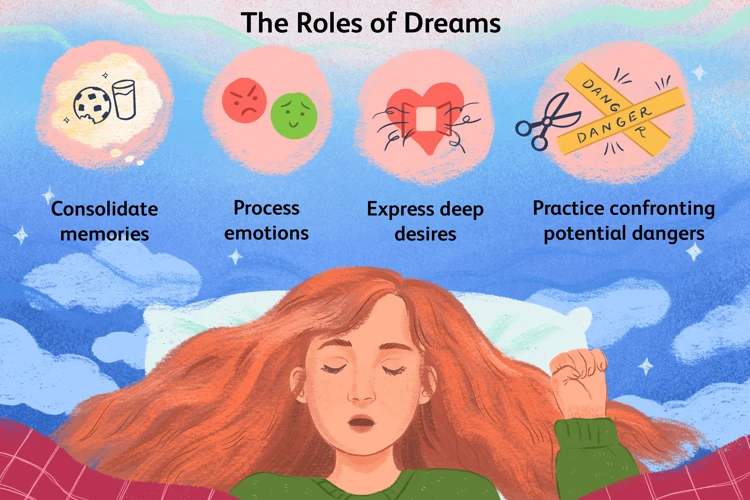
While exploring and interpreting your own dreams can be a fascinating and insightful journey, sometimes seeking professional help for dream analysis can provide a deeper level of understanding and guidance. Dream therapists, trained in psychology and dream interpretation, are skilled in unraveling the complex layers of symbolism and meaning in your dreams. They can provide valuable insights into the emotional significance of your dreams and help you navigate through any unresolved traumas or recurring patterns. Dream therapists often use a variety of therapeutic approaches, such as psychoanalysis or cognitive behavioral therapy, to integrate dream work into a wider framework of healing and transformation. By collaborating with a dream therapist, you can gain a fresh perspective on your dreams, gain clarity on issues holding you back, and cultivate a greater sense of self-awareness. So, if you find yourself grappling with perplexing dreams or seeking a deeper understanding of your unconscious mind, consider reaching out to a dream therapist and embark on a remarkable journey of self-discovery and healing.
The Role of Dream Therapists
Dream therapists play a crucial role in helping individuals navigate the complex landscape of their dreams and uncover the deeper meanings and emotions within them. These professionals are trained in various therapeutic approaches that specifically focus on dream analysis and interpretation. By working closely with clients, dream therapists provide a safe and supportive environment where individuals can explore their dreams in depth.
One of the primary roles of dream therapists is to guide clients in understanding the symbolism and emotional significance behind their dreams. They help clients identify recurring themes, patterns, and symbols that may be significant in their dream narratives. Through careful analysis and interpretation, dream therapists assist clients in connecting these symbols to their personal experiences, beliefs, and emotions.
Dream therapists also help individuals explore the unresolved emotions or trauma that may emerge in their dreams. They facilitate a process of emotional release and catharsis by encouraging clients to express and process these emotions in a therapeutic setting. This can be particularly beneficial for individuals who have experienced trauma or have deep-seated emotional issues, as dreams provide a unique avenue for revisiting and addressing these unresolved emotions.
In addition to analysis and emotional processing, dream therapists assist clients in integrating the insights gained from their dreams into their waking lives. They guide individuals in applying the lessons and symbolism from their dreams to real-life situations, helping clients gain a deeper understanding of themselves and make meaningful changes. Dream therapists may also suggest practical strategies for utilizing dream-induced healing techniques in daily life, such as visualization exercises or mindfulness practices.
It is important to note that dream therapists work in collaboration with other therapeutic approaches. They may collaborate with psychologists, psychotherapists, or counselors to ensure a holistic approach to emotional healing and wellbeing. By combining the power of dream analysis with other therapeutic modalities, dream therapists provide clients with a comprehensive and integrated approach to healing and self-discovery.
Dream therapists have a vital role in helping individuals unlock the transformative potential of their dreams. Through analysis, emotional processing, integration, and collaboration with other therapeutic approaches, dream therapists guide individuals on a journey of self-reflection, healing, and personal growth. Whether you hold a specific interest in dream work or are seeking guidance in understanding the meaning behind your dreams, a dream therapist can provide invaluable support in unraveling the mysterious and profound world of dreams.
Integration with Other Therapeutic Approaches
Integration with other therapeutic approaches is a key aspect of utilizing dreams as a tool for healing. Dreams can provide valuable insights and material for other forms of therapy, enhancing their effectiveness and promoting holistic healing. One way to integrate dreams with other therapeutic approaches is through psychoanalysis. By analyzing the symbols, emotions, and narratives within dreams, psychoanalysts can gain a deeper understanding of an individual’s unconscious thoughts and feelings, providing valuable information for further exploration in therapy sessions. Additionally, dreams can be used in conjunction with cognitive-behavioral therapy (CBT) techniques. By examining the thoughts and beliefs that arise during dreams, individuals can gain awareness of their cognitive patterns and work towards reframing and replacing negative or maladaptive thoughts. This integration can reinforce the work done in therapy sessions and promote long-term change. Another approach is incorporating dream work in mindfulness-based therapies. Mindfulness practices can help individuals cultivate a non-judgmental and accepting attitude towards their dreams, allowing them to fully explore and process the emotions and symbols that arise. This integration enhances self-awareness and facilitates emotional healing. Additionally, dreams can also be utilized in somatic therapies, where the physical sensations experienced during dreams serve as valuable indicators of unresolved trauma or unexpressed emotions. Integrating dream work with somatic therapies allows individuals to access and release these stored emotions, promoting a sense of healing and wholeness. The integration of dreams with other therapeutic approaches adds depth and richness to the therapeutic process, supporting individuals in their journey towards emotional well-being and personal growth.
Utilizing Dream-Induced Healing in Daily Life
Dreams have the potential to offer profound healing and personal growth, and their impact doesn’t have to end when we wake up. By utilizing the insights and lessons gained from our dreams, we can incorporate them into our daily lives for ongoing healing and transformation. Applying the wisdom gained from our dreams involves paying attention to recurring themes, symbols, and emotions that arise in our dreams. By analyzing these elements, we can identify patterns, unresolved issues, and areas of personal growth that need attention. It’s important to actively integrate these insights into our waking lives by taking actions, making decisions, or adopting new perspectives aligned with the lessons learned from our dreams. Whether it’s facing fears, embracing self-compassion, or pursuing creative endeavors, dream-induced healing has the potential to bring about positive change and emotional well-being. So, let our dreams guide us on a journey of self-discovery and empower us to live more authentically with the wisdom gained from the depths of our subconscious mind.
Applying Lessons from Dreams
Applying Lessons from Dreams is a powerful practice that allows us to integrate the wisdom and insights gained from our dream experiences into our waking lives. Here are some strategies to help you make the most of the lessons learned in your dreams:
1. Reflect and journal: Take the time to reflect on your dreams once you wake up. Write down key symbols, emotions, and events that stood out to you. Reflect on what these elements might represent in your life and how they relate to your current circumstances or challenges. Journaling can help you gain clarity and identify patterns or recurring themes in your dreams.
2. Extract the core message: Identify the overarching message or lesson that your dream is trying to convey. Pay attention to any specific guidance or advice that may be embedded within the dream. This can range from insights about relationships, personal growth, or decision-making.
3. Set intentions for the day: Upon awakening, set specific intentions based on the lessons or insights from your dream. For example, if your dream highlighted the importance of self-care, prioritize self-care activities during the day. These intentions serve as reminders to incorporate the wisdom from your dreams into your daily life.
4. Take action: Dreams are not just passive experiences – they can inspire action and change. Act upon the lessons learned in your dreams by making conscious choices aligned with their insights. If your dream emphasized the importance of forgiveness, take steps to forgive someone in your waking life. Taking action based on the lessons from your dreams can lead to transformative personal growth and positive change.
5. Share and discuss: Share your dreams and the lessons you’ve derived from them with trusted friends, family, or support groups. Engaging in discussions can provide different perspectives and further deepen your understanding of the lessons and their applications. Others may offer fresh insights or shed light on aspects of the dream that you may have overlooked.
By actively applying the lessons learned from our dreams, we can bridge the divide between the subconscious and the conscious mind, leading to greater self-awareness, personal growth, and emotional well-being. Embrace the wisdom of your dreams and let them guide you on your journey of self-discovery and transformation.
Integrating Dream Insights
Integrating Dream Insights:
1. Reflect and Analyze: After waking up from a dream, take some time to reflect on its content and the emotions it evoked. Pay attention to any recurring themes or symbols that may hold personal significance. Try to analyze what these elements might represent in your waking life.
2. Connect with Emotions: Dreams often bring up deep-seated emotions that we may have suppressed or overlooked. Take note of the emotions experienced in the dream and explore how they relate to your current emotional state. Are there any unresolved feelings or conflicts that need attention?
3. Journaling: Keep a dream journal to record your dreams and the insights they offer. Write down the details of the dream, including symbols, themes, and emotions. Reflect on these entries over time to identify patterns and gain a deeper understanding of yourself.
4. Meditation and Visualization: Use meditation techniques to revisit your dream imagery and allow yourself to fully immerse in the emotions and sensations experienced in the dream. Visualization exercises can help integrate these insights into your conscious awareness.
5. Action Steps: Take action based on the insights gained from your dreams. Identify areas in your life where changes or resolution may be needed and create an action plan to address them. This could involve having open conversations, making lifestyle adjustments, or seeking professional help when necessary.
6. Seek Support: Share your dreams and insights with a trusted friend, partner, or therapist. Discussing your dreams with others can provide additional perspectives and help you gain further clarity on their meaning.
By integrating dream insights into your waking life, you can tap into a wellspring of self-awareness and personal growth. Dreams serve as a bridge between the conscious and unconscious mind, offering valuable guidance and insight into your emotional landscape. Embrace the wisdom of your dreams and allow them to shape your journey towards healing and self-discovery.
Conclusion
In conclusion, dreams play a significant role in our emotional processing and healing. They offer a gateway into the unconscious mind, allowing us to explore and process complex emotions, revisit past traumas, and release pent-up feelings. Dreams provide a safe space for us to confront and make sense of our emotions, offering a form of catharsis and emotional release. Additionally, dream work and analysis can be utilized as a therapeutic tool, helping individuals gain insights into their inner selves and promoting integration and transformation. From a scientific perspective, neurological and psychological explanations provide a deeper understanding of the function and purpose of dreams. By maintaining a dream journal, practicing lucid dreaming, and interpreting dreams with cultural context, we can nurture and harness the power of our dreams for emotional wellbeing. Seeking professional help through dream therapists or integrating dream-induced healing into our daily lives can offer further support and guidance. In essence, dreams are not merely random images and sensations but carry deep emotional significance, capable of providing us with profound insights, fostering self-reflection, and aiding in our journey towards emotional healing and personal growth.
Frequently Asked Questions
How long do dreams typically last?
The duration of dreams can vary, but most dreams are believed to last between 5 to 20 minutes, occurring during the rapid eye movement (REM) stage of sleep.
Why do we forget our dreams so quickly?
Forgetting dreams is common due to the nature of our sleep cycle. Dreams occur during the REM stage, which is followed by deep sleep, making it harder to retain the details of our dreams upon waking.
Can dreams be influenced by external factors?
Yes, external factors such as stress, medications, and environmental stimuli can influence the content and emotional tone of our dreams.
Do dreams have symbolic meanings?
Many psychologists and researchers believe that dreams often contain symbolic representations of our conscious and unconscious thoughts, desires, and emotions.
Can dreams provide insights into our unresolved emotions?
Absolutely! Dreams can serve as a portal to our unresolved emotions, allowing us to process and explore feelings that we may not consciously address in our waking life.
Can nightmares be beneficial?
Yes, nightmares can be beneficial. They often serve as a symbolic manifestation of our fears or traumas, giving us an opportunity to confront and heal from them in a safe dream environment.
Is it possible to control our dreams?
Yes, through a practice called lucid dreaming, it is possible to gain awareness and control within a dream, allowing us to actively participate and shape the dream experience to a certain extent.
Can dreams improve memory and problem-solving skills?
Research suggests that dreams can enhance memory consolidation and facilitate creative problem-solving by tapping into our subconscious mind’s ability to make connections and integrate information.
Are recurring dreams significant?
Recurring dreams often hold significant meaning, as they indicate unresolved issues or patterns in our lives that require attention and exploration.
How can I remember my dreams better?
Keeping a dream journal by your bedside and writing down your dreams as soon as you wake up can help improve dream recall. Additionally, adopting a regular sleep schedule and practicing relaxation techniques before bed can enhance dream recall as well.

